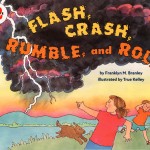
The Crisis of Crowding
Posted by admin on Sep 15, 2010 in Featured | Comments Off on The Crisis of CrowdingBOOK REVIEWS OF THE CRISIS OF CROWDING
– Frank Fabozzi, Professor at EDHEC Business School and Former Professor at the Yale School of Management
– Ken Kroner, Chief Investment Officer and head of the firm’s scientific active equity business, Blackrock
– Olivier Blanchard, Chief Economist at the IMF
– Eric Rosenfeld, Co-Founder of Long Term Capital Management and JWMP
– Robert Litterman, Former Partner and Head of Risk Management at Goldman Sachs and co-inventor of the Black-Litterman Model
– Austan Goolsbee, Former Chairman of the Council of Economic Advisors to the President, Professor at University of Chicago
– Jimmy Cayne, Former CEO and Chairman of the Board of Bear Stearns
– Brenda Jubin – A philosopher by training (Yale), a trader and investor, a book lover.
– Janet Mangano – co-chair of the Private Wealth Management Committee at NYSSA.






